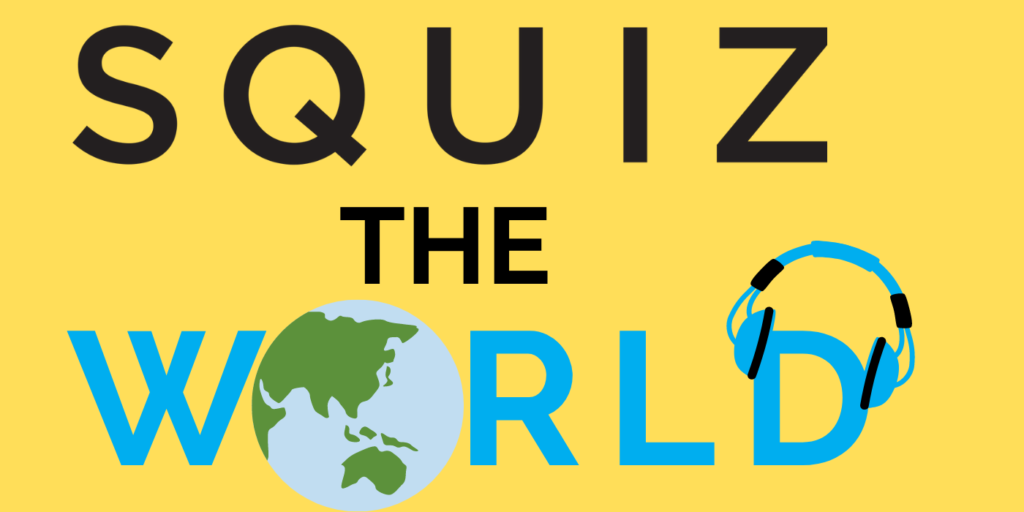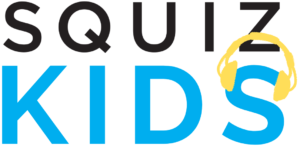
Squiz the World goes to … Cuba
LINKS:
Map: https://en.wikipedia.org/wiki/Cuba#/media/File:CUB_orthographic.svg
Classic Cuban cars: https://www.anywhere.com/cuba/travel-guide/classic-cars
Buena Vista Social Club: https://www.buenavistasocialclub.com/
Ropa Vieja recipe: https://www.daringgourmet.com/best-ropa-vieja-the-national-dish-of-cuba/#recipe
EPISODE TRANSCRIPT
Each week, we give the world globe a spin, and see where we land. Then we take the kids of Australia on an audio excursion to visit that country and its people.
I’m Amanda Bower, and today on Squiz the World we’re visiting a place well known for its music… its communist revolution … its cigars… and the old cars lining its streets…
Can you guess? Strap yourselves into the Squiz Kids Super Fast Supersonic Jetliner as we take off and take a squiz at Cuba
JUST THE FACTS
Can you picture North and South America? If you follow the continents from North to South, they make the shape of an “S”, with the join happening in Central America. I’ll put a map in your episode notes so you can see what I mean. The Republic of Cuba sits in the middle of the top half of the “S”, where the Caribbean Sea, Atlantic Ocean, and Gulf of Mexico meet.
Cuba is made up of many islands, but the biggest, main island is long and skinny… 1,200 km from end to end, but only 100km wide in most places. It has a population of 11 million people, and its capital and biggest city is called Havana.
About one third of that main island is covered by mountains and hills, and the other two thirds are flat plains, used mostly for farming. Cuba grows a LOT of sugar… it was the world’s biggest exporter of sugar in the first half of the 20th century.
Cuba also grows a lot of tobacco, which is used to make its world famous cigars. Personally, I find the smell of cigars completely disgusting… and just like cigarettes, they have been proven to cause cancer… but selling cigars to other countries makes Cuba a lot of money each year.
Now, we need to talk politics. Cuba became independent in 1902, and had a very messy political system – with lots of corruption, and foreign interference, and armies taking over governments – until 1959. That’s when a man called Fidel Castro led a group of rebels that took over the country.
Eventually Castro established what’s known as a “unitary Marxist-Leninist one-party socialist republic”. Basically it means that the government owns and controls just about everything in the country. There are elections, but they aren’t considered democratic – only one party is allowed! Opposition to the ruling party is not permitted. Access to information, including the internet, is tightly controlled by the government. One of the worst countries in the world for press freedom – meaning that journalists can’t write what they observe if it’s critical of the government.
That means that a lot of people have left Cuba – even though the government made it hard for them to do so. Miami, in Florida, is often called “Little Havana” because of all the Cubans there!
Whenever you travel, it’s important to learn a few words in that country’s language. It’s a great way to show respect. So, let’s….
LEARN THE LINGO
Cuba was ruled by Spain for almost 400 years, so Spanish is the official language… but Spanish speakers visiting from other countries can have a hard time understanding the Cuban accent and slang!
I can’t tell you how thrilled I am to welcome Squiz Kid Yennifer to teach us some Cuban Spanish. Remember how I said that a lot of Cubans had left the country? Well, Yennifer’s parents, Michel and Yunia, didn’t agree with what the Cuban government was doing, and they protested. They were being watched by the government, and were worried that they would soon be put in jail. So, they flew to Central America, and then walked over the border to the USA, where a special law allows Cubans who escape the government to stay.
Yennifer, how do you greet someone in Cuba?
¿Asere qué bola?
Asere is the Cuban word for a friend – like “mate”. In regular Spanish, you say “amigo”. And “que bola” means “how are you”, and is only used in Cuba. In regular Spanish, you say “como estas”. Yennifer, can you say the two of them again, please?
¿Asere qué bola? ¿Amigo, como estas?
Yep, they’re definitely pretty different. Okay, aseres… remember, that means friends…
Now that we can communicate a little bit, it’s….
TIME FOR SCHOOL
The Cuban constitution, or the set of rules for the country, says that education and healthcare are both basic human rights… so it costs nothing to go to primary school, high school, AND university. As a result, Cuba has one of the world’s highest literacy rates – literacy meaning the ability to read and write.
School is compulsory from the age of six, and uniforms are also compulsory. Everyone wears a white shirt, but kids in kindergarten wear blue bottoms; primary school kids dress in burgundy red; and high school, yellow.
But here’s one tricky thing… the government allows you to buy just ONE uniform a year. So if you fall over in the playground and get muddy, or spill your lunch, you’ve got to wash it and get it dry before the next day. How many school uniforms do you have?
Okay, school is over in Havana, the capital, and it’s time to walk home. On the way, we’re going to experience two really important parts of Cuban culture…
LET’S GET CULTURAL
The first thing you’ll notice on the streets of Havana are the REALLY old cars. I’m talking 70 and 80-year-old American cars, that were brought into Cuba before the revolution. After the communist government came into power, it was hard to get new cars, so people became expert mechanics, keeping these big tanks running for decades. I’ll put some photos in your episode notes… walking down the street is like being at a classic car show!
Hear that? It’s a famous type of music called son Cubano. That means “Cuban sound” in Spanish, and many types of Latin music forms, including salsa, have their roots in son. Having your ‘roots’ in something means that’s how they got started. Son had almost faded from Cuban life until a multi-award winning album was recorded over seven days in Havana, in 1996. Called “Buena Vista Social Club,” it brought together musicians who were big in the 1940s and 50s, before the revolution. It was a worldwide sensation, and son Cubano was back. There’s a link in your episode notes !
Everywhere you go in Cuba, people love to dance. When I was there, and I mentioned that I didn’t know how to salsa, the people I was having dinner with were shocked. They pushed the table and chairs to one side, cranked up the music, and taught me!
Does dancing make you hungry? I think it might be…
DINNER TIME
The national dish of Cuba is called ropa vieja. It’s a slow-cooked beef stew, and the recipe has been around for at least 500 years. Now, if you speak Spanish, you’ll know that ropa vieja means “old clothes”, which really doesn’t sound so delicious.
One story says that a poor man who had nothing to feed his family shredded and cooked his own clothes… and then a miracle occurred and it turned into delicious meat. A simpler explanation is that a man sold his old clothes for some meat for his family.
Either way, I’ll put a recipe in your episode notes. Serve it with rice and beans – you’ll find them accompanying just about every meal in Cuba – and feel free to have a dance when you’ve finished.
THE S’QUIZ
This is the part of the podcast where you get to test how well you’ve been listening.
Question 1. What does “son Cubano” mean in English?
Question 2. What colour are the pants worn by primary school kids in Cuba?
Question 3. For much of last century, Cuba was the world’s biggest exporter of what?
